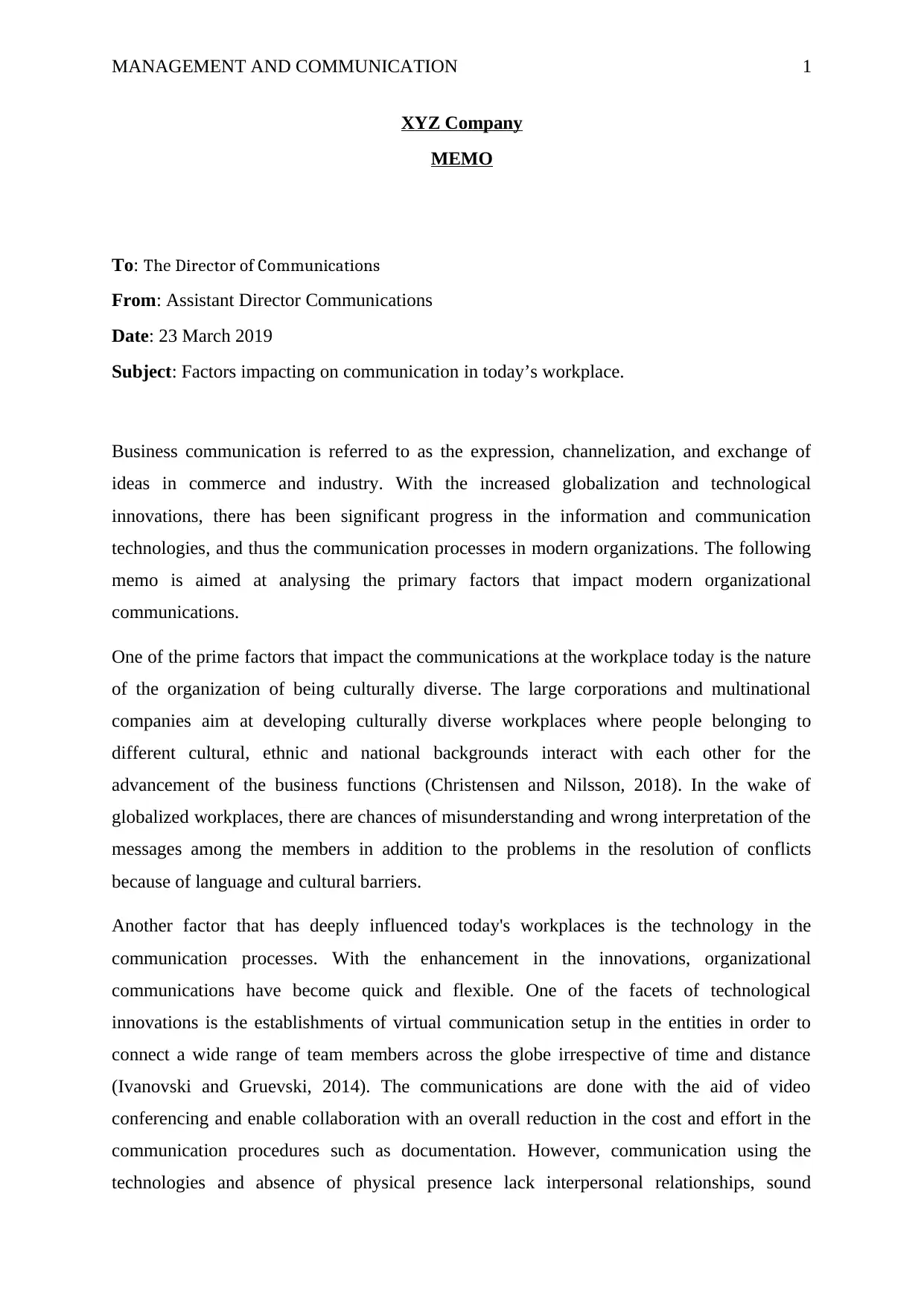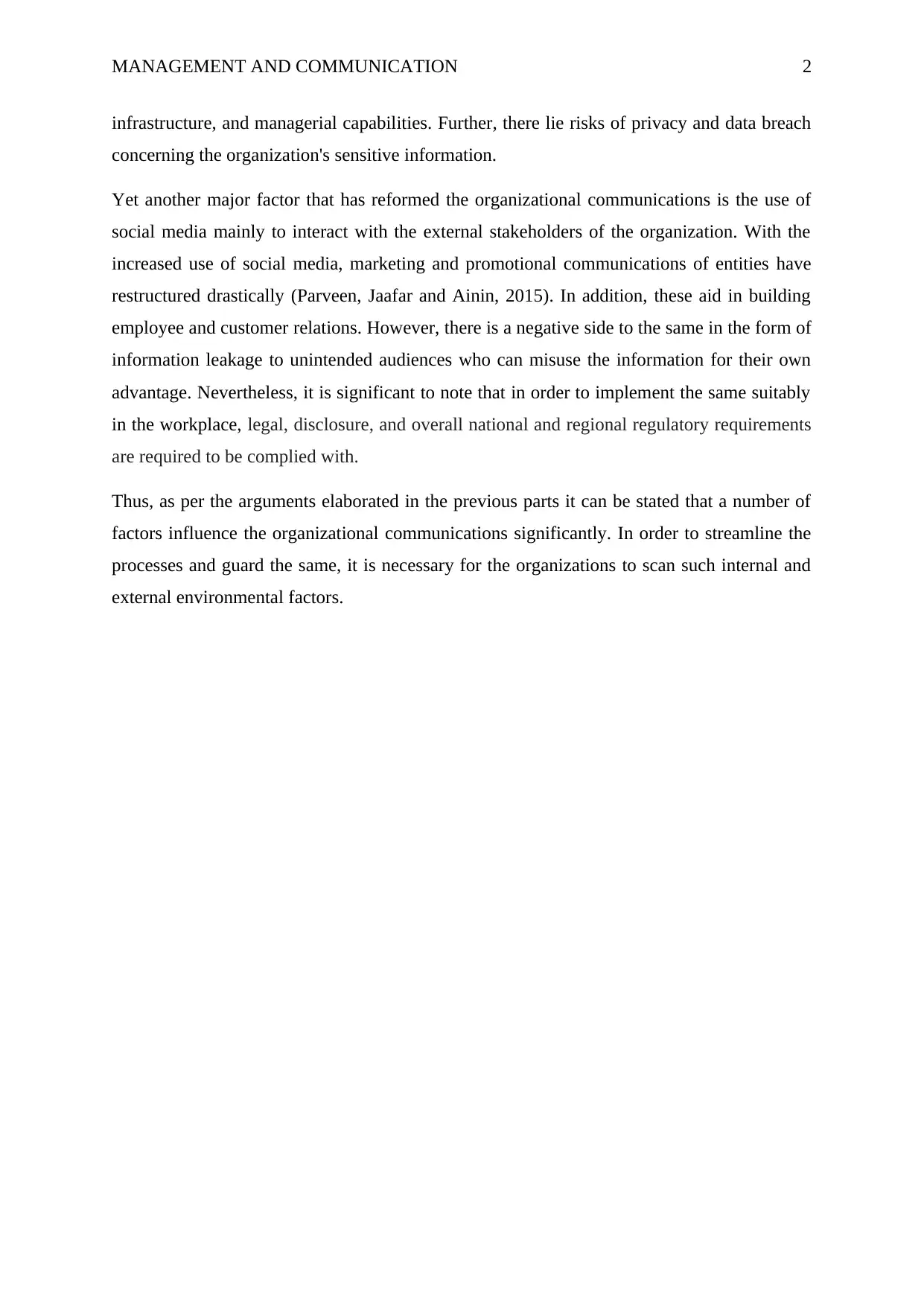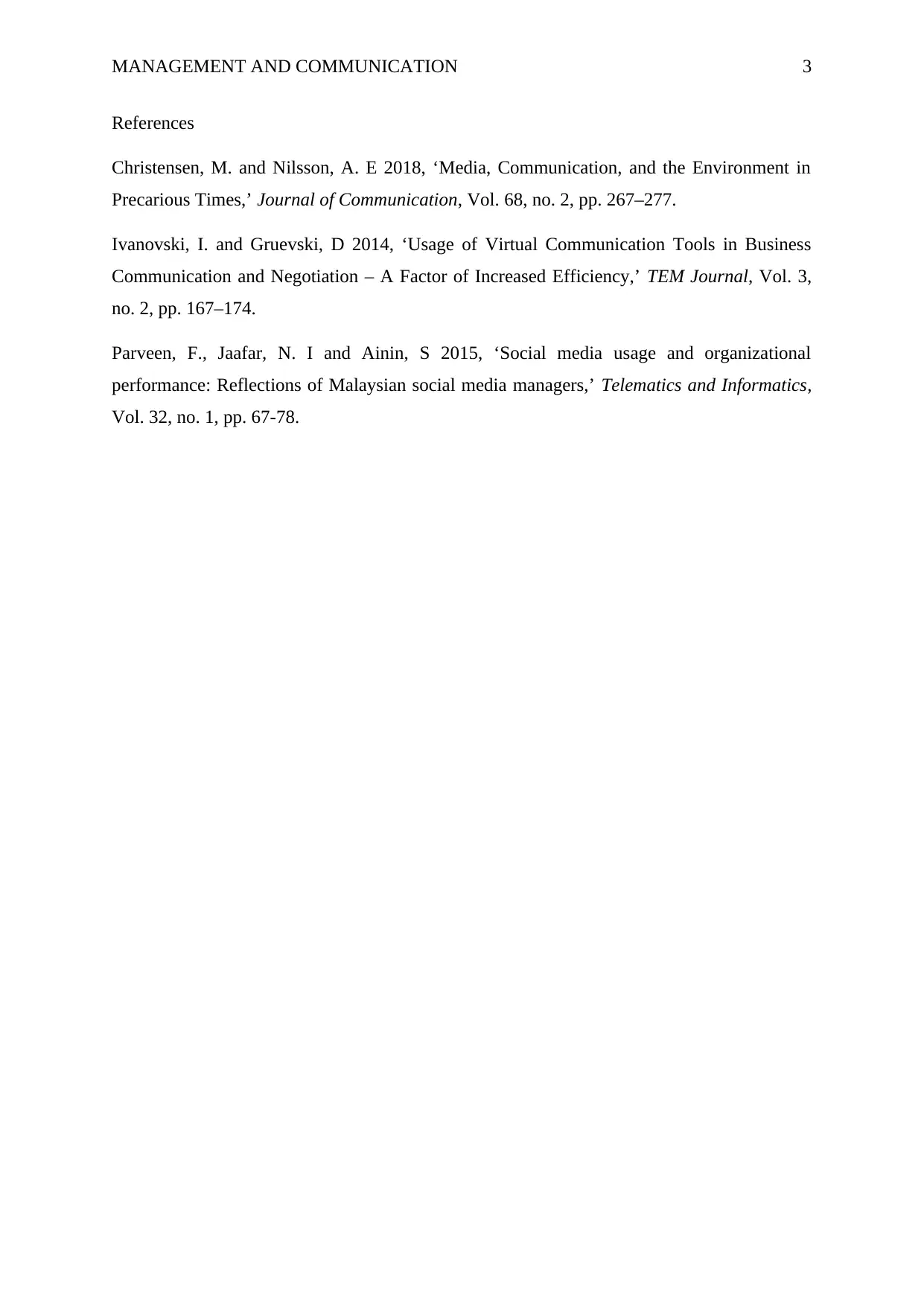Management and Communication: Workplace Communication Factors
VerifiedAdded on 2023/04/12
|3
|567
|112
Report
AI Summary
This memo, prepared for the Director of Communications at XYZ Company, analyzes three key factors impacting communication in today's workplace. The first factor discussed is the increasing cultural diversity in organizations, leading to potential misunderstandings and conflicts due to language and cultural barriers. The second factor is the role of technology, which enables quick and flexible communication through virtual setups, but can also lead to a lack of interpersonal relationships and data privacy risks. The third factor examined is the use of social media, which restructures marketing and customer relations but also poses risks of information leakage. The memo emphasizes the need for organizations to monitor these internal and external environmental factors to streamline and safeguard communication processes. The analysis is supported by research articles on media, communication, and organizational performance.
1 out of 3









![[object Object]](/_next/static/media/star-bottom.7253800d.svg)